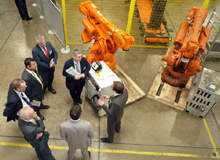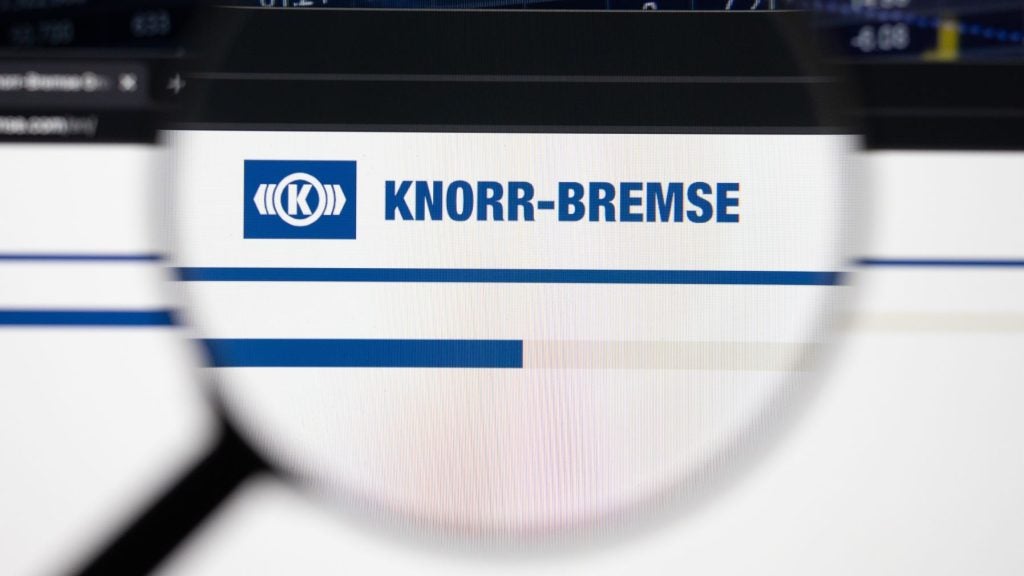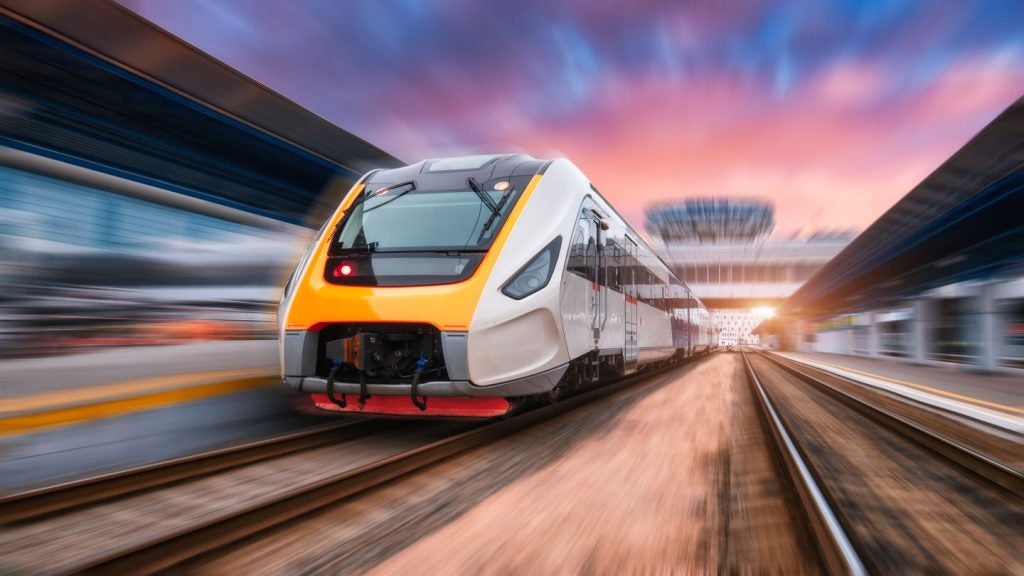
The automotive industry is the market leader for robotics investment but during the economic downturn it is experiencing a decline while industries such as food, consumer goods and pharmaceutical are investing in robotics more than ever. After years of testing in the automotive industry, robotic tools can be transferred to the rail sector and manufacturers are just beginning understand how they can work together.
The Robotics Industries Association (RIA) estimates that there are more than one million robots being used worldwide. But while China, Korea and India are rapidly increasing their robotic investments, in the US robot orders from automotive manufacturers recently declined by 31%. This has led technology providers to look towards other industries, according to the RIA.
In the UK, the British Automation & Robot Association (BARA) reported that around 800 robots were installed in Britain in 2007, with the automobile industry proving to be leading at that time. As it lumps the rail sector in with its "Other Transport" classification it is hard to know just how widespread the use of robots is. Robotics supplier ABB is, however, keen to prove that robotics can revolutionise the rail industry.
From road to rail
With its vast experience in providing industrial robots, ABB recognised that similar processes could be used in the rail industry, in turn transforming the sector's productivity and efficiency. ABB rail development manager Steve Bartholomew says that tools used previously for road vehicles can serve and simplify the rail industry. "Our experience with the metal fabrication industry has provided us with an insight into processes that mirror those in the rail industries," says Bartholomew.
See Also:
The FlexFramer is one such tool that has been designed for main body assembly. This robot uses geometric tooling to manage the handling and positioning of parts in one function. It speeds up the process of delivering new varieties of models to the market.
How well do you really know your competitors?
Access the most comprehensive Company Profiles on the market, powered by GlobalData. Save hours of research. Gain competitive edge.

Thank you!
Your download email will arrive shortly
Not ready to buy yet? Download a free sample
We are confident about the unique quality of our Company Profiles. However, we want you to make the most beneficial decision for your business, so we offer a free sample that you can download by submitting the below form
By GlobalDataIn addition, ABB manufactures the FlexiCell – a spot-welding cell that is built from standardised components. It can be used by itself or with other cells on assembly lines and its capacity can reach up to 4,000 per hour. In terms of the sub-assembly of underbody, body sides, engine compartments and roofs in the automotive industry, ModulFex includes a tool-change system that operates without disrupting the production flow rate.
All of these can be used for similar manufacturing processes in the rail industry. To demonstrate these ideas, ABB Robotics organised a "Robotics in Rail Manufacturing Technology" day on 4 June 2009 in the UK. As well as boosting sales the event was designed with an educational aspect to give the rail industry an insight into the potential of robotics and expand the understanding of the rail industry's needs.
At the event simulations of robots performing cleaning and painting, machine handling and tending processes took place. In addition, ABB organised demonstrations of inspection, welding, deburring, cutting and civil engineering techniques and hands-on sessions ran to give greater programming commands and inform attendees how to monitor a robot's health. ABB is keen to promote innovation and so it also looked to the future by inviting apprentice rail engineers from a rolling stock specialist so they could understand how manufacturing lines could benefit from robotic technology.
Securing contracts
ABB has already secured a successful contract with the railway industry. After being approached by French railway company Société Nationale des Chemins de fer Français (SNCF) in 2007, ABB provided a £1.8m order of automated spray painting booths to its Périgueux site in south-west France.
SNCF needed a product that could reduce paint consumption, increase production capacity and improve the company's environmental standards, the latter being one of the main motivations for approaching ABB. SNCF Périgueux Technicentre director Alain Praxmarer also saw it as an opportunity to modernise operations, build two-level cars and "to be a part of the concept of sustainable development".
The solution included a preparation area, painting booth, a paint thinning area and a curing oven, which was equipped with two IRB 5400 robots. When programmed, all surfaces of the vehicle could be painted as well as producing energy savings as the need for ventilation would be minimal. To meet environmental demands, environmentally friendly waterborne paints were used, which also decreased employee risk of exposure to hazardous emissions.
Cost savings were also made through the oven technology, which ensured the normal four-hour drying time was reduced to 55 minutes. In addition, there was a decrease in required space as robots could be placed on shelf systems, walls or even on ceilings. In SNCF's case this meant the space needed dropped from 210m² to 80m².
Robot transformers
Manufacturers are now looking for the key reasons for the railway industry to invest in robots and how can they make their businesses more competitive.
Reducing operating costs is important for any business. According to ABB, robotics can be used to reap potential savings of 8% for every 1ºC reduction in heating levels and therefore reduced energy use, offering a good way to cut energy bills. Additionally, through using robots for welding applications costs can be cut in half. "Manufacturers have typically reduced their overall welding costs by up to 50% of the overall product costs," Bartholomew says.
As machines will not get tired or become distracted by repetitive tasks, robots increase quality and consistency. They also improve the quality of working conditions for employees by ensuring they are not exposed to dangerous conditions. "Robotic equipment is ideal for machine handling and tending in hazardous environments," says Bartholomew.
SNCF's new spray painting booth proves that space saving is an advantage and ABB's SafeMove provides a predictable robot motion that can be restricted to exactly what is needed by the application.
"Further savings on space can be achieved by adding speed limitations and reducing safety distances," adds Bartholomew. "The safety solution also reduces the need for many safety devices, such as light curtains and protective barriers, and instantly saves money on installation and maintenance."
Another major draw for robotic implementation is the fact that offline programming is possible, which can be carried out on the office PC. This means that the production doesn't have to be shut down, enabling programmes to be prepared in advance and increasing overall productivity.
With 1.2 million industrial robots set to be operating in factories by 2010, manufacturing companies worldwide are boosting their competitive edge. Now, ABB is paving the way for the railway industry to increase theirs while also increasing productivity as well as implement environmentally-friendly and sustainable automated processes.







